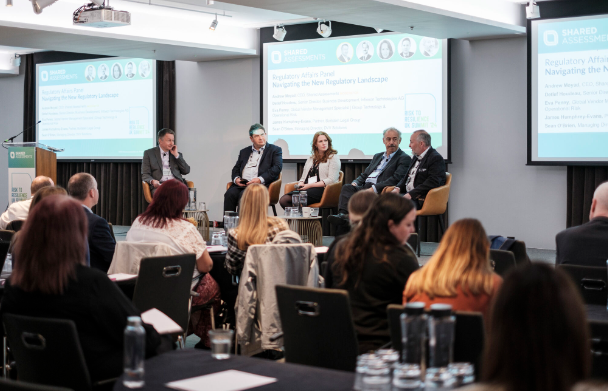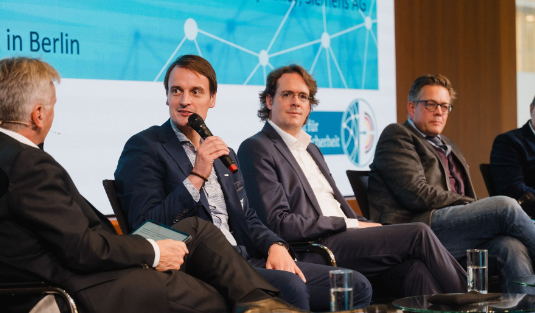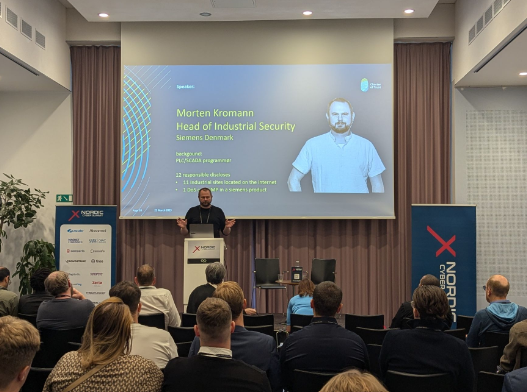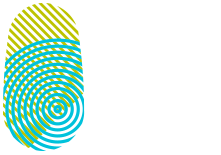By Sudhir Ethiraj, Global Head of Cybersecurity Office, TÜV SÜD and
Dr. Angelika Steinacker, CTO Identity & Access Management, IBM Security Services EMEA
Security right from the start
The principle of Security by Default is focused on considering security to be built in and up and running from the start. This means including security considerations into a design of a product and the underlying processes and even when formulating policies for an organization at large instead of security being an add-on feature at the end of the process before going to production.
The rapid increase in digitization today, especially accelerated by the pandemic situation, has led to a tremendous increase in the attack surface. Therefore, there is a need to consider the Security by Default principle as a fundamental need to ensure adequate levels of security in society.
The Charter of Trust aims to increase cybersecurity levels in society via collaboration between its member companies across industries and associated partners and has defined 10 Principles to achieve this goal. One of the 10 Principles is the principle of security by default. The Charter Taskforce on Security by Default has been working on this principle for the past three years , compiling baseline requirements and creating explanatory documents on what it means to adopt security by default.
Security by Design vs Security by Default
The concept of “Security by Design” is quite familiar. It means to include security features and capabilities into products and services when designing and producing those products and services. “Security by Design” is a basic requirement and has improved the security of products and services tremendously.
The concept “Security by Default” goes a step further: The security and capabilities of a product or service are active from the beginning. This means that no explicit activation is necessary since this can be forgotten or neglected in some cases. It is especially helpful and necessary in devices used by people not that familiar with security features, e.g. in IoT devices like smart bulbs or smart watches.
Furthermore, “Security by Default” aims at maintaining the security properties during operation and over the lifetime of a product or service. One of the basic requirements for achieving “Security by Default” is therefore that the security properties must be tested accordingly, i.e. under real operating conditions.
Design vs reality
“Security by Default” can really make a difference if security features are sufficient, enabled and productive for the lifetime of a product or service. The need for Security by Default as stated above can be seen in the incident that happened in 2019, where a feature was found in a series of connectivity chips used to connect billions of IoT devices like medical devices or smart meters. An attacker could use this feature in operation to gain control over the machine hosting it. Although these chips had several security features, they had not been sufficient to prevent attacks during operation. You can read about this here.
Charter of Trust drives Security by Default
CoT’s Principle 3 states: “Adopt the highest appropriate level of security and data protection and ensure that it is preconfigured into the design of products, functionalities, processes, technologies, operations, architectures, and business models.”
How do we work to achieve this?
To cover the broad spectrum of topics under security by default, we as a taskforce defined our scope of what we thought was essential to cover under Security by Default and would bring us nearer to the goal of increasing security levels. We therefore split the work into three phases and the taskforce members from companies collaborate to define baseline requirements for security by default. The three phases are:
- Phase 1: Products, Functionalities and Technologies
- Phase 2: Processes, Operations and Architectures (Ongoing)
- Phase 3: Sharing of best practices for adoption of Security by Default
We finalized Phase 1 last year and have nearly finished Phase 2, so we are about to start the final phase. Stakeholders from different industries helped us get different perspectives on Security by Default while defining the scope and the baseline requirements to ensure that these requirements can truly be baseline and can be adopted across industries.
Taskforce resources / results so far
- Baseline Requirements for phase 1 – Products, Functionalities and Technologies
- Explanatory document along with mapping to global standards to facilitate the adoption of the baseline requirements
- Charter of Trust Blogpost on Security by Default
- Podcast on Security by default
Outlook
With the Charter of Trust set out to increase cybersecurity in the society through collaboration between industry partners and exchange with political stakeholders, the taskforce is fully committed in executing this vision. The taskforce will soon publish the results for phase 2 on processes, operations and architectures with the baseline requirements and an explanatory document.
The next steps include moving to phase 3 focusing on best practices to adopt Security by Default requirements from the member companies and getting the message across to different stakeholders in society and supporting a dialogue with stakeholders on these crucial topics. This will include several ways of sharing best practices, e.g. a webinar series with a panel format including an external audience, and articles and case studies showcasing where the requirements have been successfully adopted.


You may also like

UK/EU Summit - “Risk to Resilience”
💡Under the theme “Risk to Resilience” the first event of this series was held in London and brought together professionals from different industries and regions. Detlef participated in the panel about the complex regulatory landscape and emphasized that new legislation like the EU AI Act, DORA and Hashtag#NIS2 continue to push the standard of care on cybersecurity and other risks.
Thanks to Shared Assessments for organizing such an amazing event and inviting the Charter of Trust to participate in this high-class panel alongside Andrew Moyad, CEO at Shared Assessments.


36th Cyber Security Day: Working together for more resilience in the digital future
🌐On 26 September 2024, the Bundesamt für Sicherheit in der Informationstechnik (BSI), Alliance for Cyber Security, and the DIHK invited experts, companies, authorities and political decision-makers to jointly strengthen Germany's cyber resilience.
The event was a great mix of policy debate, practical exchange, workshop and networking under the motto ‘Stronger Together: Greater Resilience through Cooperation’.
✨ One of the highlights of the day was the closing panel with Claudia Plattner, President of the BSI, Dr. Stefan Saatmann, Deputy Head Berlin Office at Siemens, Konstantin von Notz, Member of the Bundestag for B90/Greens, and Alexander von Gernler, German Informatics Society, interchanging ideas to foster resilience through collaboration. Initiatives like the CoT baseline requirements and its huge potential for international harmonizing cybersecurity regulations were discussed as well.
Let’s all work together so that closer cooperation between the BSI and businesses bring more tangible effects to increase digital resilience. Special thanks to Nils Hasenau for providing the excellent photos and also to Simon Ulmer and Ralf König for attending the event.


Nordic Cyber Summit 2024
What a great opportunity for Morten Kromann, Head of Industrial Security Denmark at Siemens, to present the Charter of Trust perspective on cybersecurity regulations like Hashtag#NIS2 at the Nordic Cyber Summit in Copenhagen.
This year the summit was again a formidable event to engage with top cybersecurity experts, share insights, and discuss strategies to navigate the ever-evolving threat landscape in the Nordic region with the theme “Fortifying the Future: Building Cyber Resilience in a Transformed World”.
A main aspect highlighted by Morten was the discrepancies between the NIS2 directive’s incidents reporting timeframe and related provisions adopted in other legislations. These regulatory overlaps create difficult compliance environments for industry and costly operational pressures which add to the fragmentation of the market instead of harmonizing it. That is why the Charter of Trust emphasizes streamlining reporting requirements stemming from these different legislative frameworks and developing single entry points for reporting on the national level.
These and more points will also be discussed during our next Security-by-default Webinar taking place on the 29th of October. Sign up to find out more what the Charter of Trust Partners views are on how to prepare for NIS2 and other regulations: https://lnkd.in/eh_z8Z63



